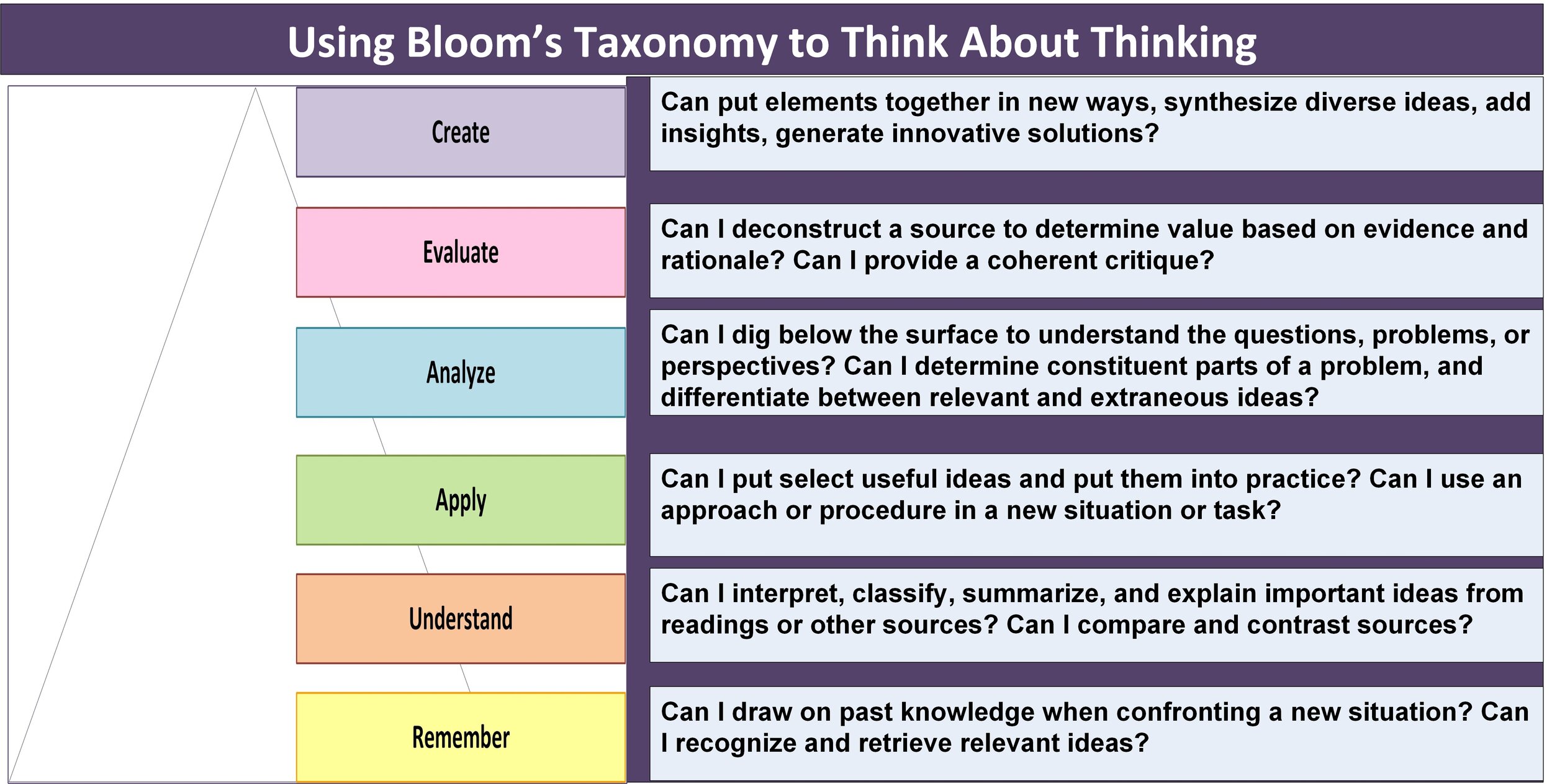Critical & Creative Thinking in Research
by Janet Salmons, PhD Research Community Manager for Sage Research Methods Community
Critical thinking and creative thinking are distinctly different, but highly interconnected.
Nowhere is the symbiotic relationship of creative and critical thinking more apparent than in the practices inherent to research design, conduct, and dissemination. What do these terms mean, and how can we use them to better understand our roles as researchers? While a search yields lengthy philosophical ruminations, the Oxford Living Dictionary offers a simple and concise definition of critical thinking:
The objective analysis and evaluation of an issue in order to form a judgement.
Oxford's definition of creative thinking is:
Relating to or involving the use of the imagination or original ideas to create something.
To connect these definitions and situate them in a research context, I'll draw on the (updated) Bloom's Taxonomy (2000). This taxonomy lays out dimensions of thinking involved with acquiring, using, and generating knowledge. We can see that thought processes associated with analysis and evaluation, central to the Oxford definition for critical thinking, build towards the ability to create new ideas or solutions. Critical and creative sides of the thinking process are essential if we are to accomplish the goal central to scholarly research: to make an original contribution.While presented in a linear manner in this figure, the categories interrelate in various ways, depending on the task at hand. There are times when, in the course of analyzing or evaluating a problem, we realize that we lack some important foundations so we need to read more literature and improve our understanding. We might also see an important path from the new solutions derived at the creative stage, to their application in practice. In short, as researchers we need the ability to move across these dimensions, using both critical and creative thinking at various stages.Here is one way to consider intersections between critical and creative thinking over the course of a study:
Use Critical and Creative Thinking at Each Research Stage
Planning the Study
Evaluate potential research problem(s) from multiple angles.
Look beyond the typical ways research problems are identified.
Analyze the scholarly literature.
Evaluate perspectives from other schools or thought or disciplines.
Draw ideas from related contemporary writings, media, social media to learn from viewpoints outside of academia.
Designing the Study
Articulate clear, concise research questions and/or hypotheses.
Evaluate and select theoretical and methodological options.
Invent theories or methodologies.
Adapt theories or methodologies from other cultures or disciplines.
Evaluate data needs and select population, collection options.
Develop/adapt interview questions, observation guides, instruments.
Consider visual or creative methods for collecting data.
Conducting the Study
Continue to analyze and evaluate study progress and adjust as necessary.
When collecting data from human participants, use ingenious ways to gain cooperation of gatekeepers, and to develop rapport conducive to questioning/surveying participants.
Making Sense of the Data
Critically analyze the data.
Interpret the themes and trends emerging from the analysis.
Visualizing the data.
Sharing Results
Analyze and describe results in ways that will help readers understand the significance of the study.
Discover imaginative ways to present findings and reach those who can use them. Use visuals, graphics, media, links to related resources.
Applying the Results for Impact
Understand needs in the field, evaluate ways findings match needs, take steps to apply
Imagine new ways to use what you learned from the study.
How would you map your own research? Do you feel your own strengths are on the critical or the creative side? What can you do to develop a more holistic set of research skills?
Anderson, L., Bloom, B. S., Krathwohl, D., & Airasian, P. (2000). Taxonomy for learning, teaching and assessing: A revision of Bloom's Taxonomy of Educational Objectives (2nd ed.). New York: Allyn & Bacon, Inc.










